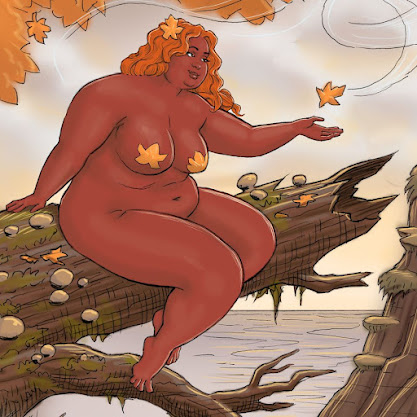And what, you ask, is "BPPB"? Well, it is the Black Pudding Play Book, of course.
Black Pudding issue 4 (2018) featured 15 pages of house rules under the OSR Play Book title. Black Pudding issue 7 (2022) featured a 17 page gazetteer and mythos for the world of Yria.
Black Pudding Play Book includes all those pages (with modifications), plus 32 more. It's a 64 page book.
Now, the plan is to simply release it as a PDF and POD on DTRPG. I am not planning a big crowd funding campaign or anything. The world is not good right now, prices are already high, I just don't feel it. I want to put this out there because I love it and I want to share it. The PDF will probably be Pay What You Want, just like the issues of BP have always been. The POD will cost money, naturally.
POD note: DTRPG requires a blank page at the end for their internal use. So the book will actually be 63 pages of content. But there's a random table on the back cover, which was meant to be on the interior. So that is your 64th page.
DESIGN NOTESI have a lot of design notes, so I'll just keep this one a bit short and to the point, hitting on a few important ones I want to mention before I forget.
• I find that I use both GM and Judge. I won't change that. They are interchangeable.
• These are house rules for B/X. Hacks. I've developed them over a god damn decade now, playing here and there, and noodling about them all the time. They are the kinds of house rules I enjoy using. You might not like them all, and that's fine. You can pick and choose. But be aware that some of them are interdependent.
For example, Thief skills are based on making a Saving Throw plus ability score mod. If you abandon the single Save method, you need to consider which category of Saves to use for these skills, or default to a DC system like modern D&D. It's fine either way.
• Speaking of Thieves. I kept the XP requirements for the core classes unchanged. So Thieves have the lowest requirements. But in BPPB, Thieves are useful. They can DO THINGS. Their skills are good. I gave a balancing nod to this fact by making them a bit less combat-effective. Their to hit bonus is not as good as B/X. But that's ok. If you wanted to be a great fighter, be a god damn Fighter.
• Speaking of shitty fighting... I did not give Wizards much of a combat bonus at all. And I think that's appropriate. But I did give them SOMETHING. I don't see how you could work beside warriors for 5 levels, being in many fights, and not get a little better at fighting. So they do eventually get a bonus.
• I did away with spell levels. I don't need them. I retooled most of the 1st and 2nd level spells (and others) to be level-less. For both Wizards and Clerics.
• Speaking of Clerics... I have never been a fan of D&D Clerics. They are generic. Later editions did a better job making them cool, but still. I honestly favor a game without them. But I did include them in this one and gave them a lot of random tables for customization. They do have to make a Prayer Roll, just in case their gods decline their petition for a miracle. It's only fair. Oh, and Clerics can't heal very much. They can a bit, but not much. I increased the amount you heal by sleeping, which I much prefer.
• Speaking of classes... You can use any BP class you want, or any other class. It's fine. But the classes actually defined within this book are, in order of appearance: Fighter, Thief, Dwarf, Elf, Botten, Cleric, Wizard, Goblin, Lizz, Skeleton Warrior. That kind of represents the most common "adventuring types" found in the setting. There's a table showing the average distribution of classes, and I think "other" (BP classes like Eyeball) are about 5% of the total. But players don't choose based on that. They just choose. Or roll. Whatever.
I'll follow this rambling post up later with more information. The book is 99.9% complete. Everything is done from the cover to the back cover. But I need to give it a few more editorial passes, then put it into the right format and get myself a print copy before I go firing it out into the world. That being said, it will still be at least a few more weeks. Stay tuned if you like this kind of shit.
















.jpg)
.jpg)

.jpg)
.jpg)









.jpg)





















